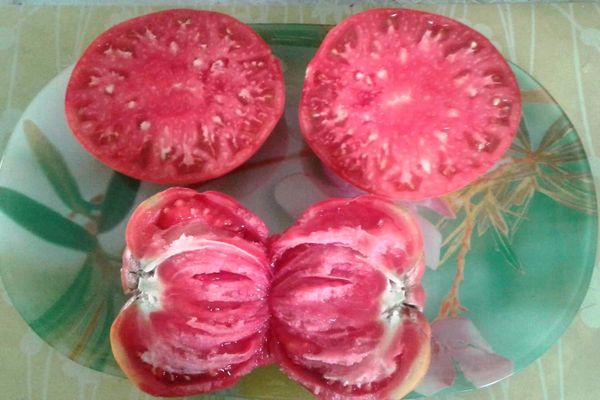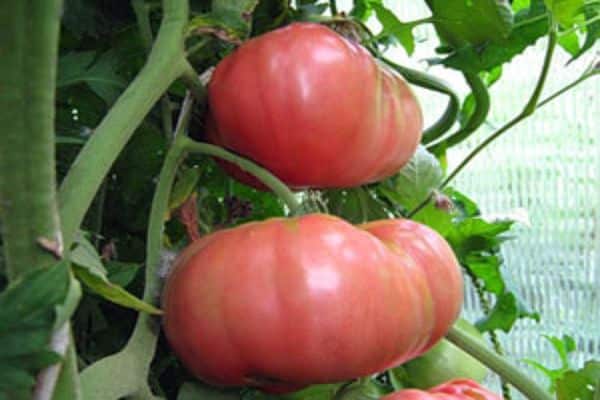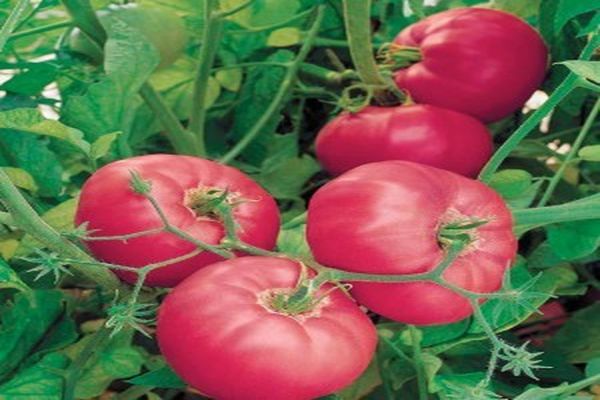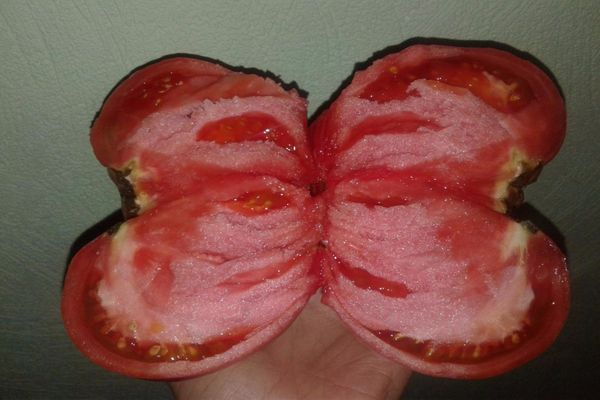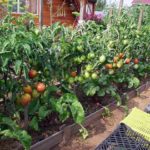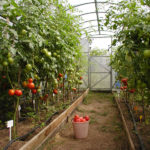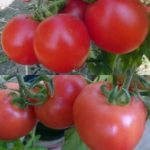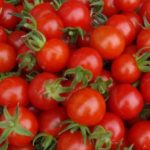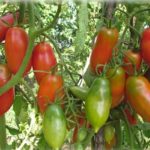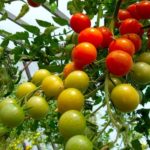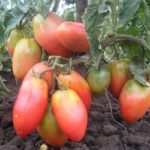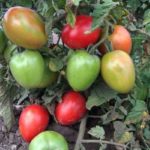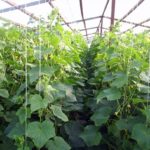Every year, new types of tomatoes are developed through crossing. Hybrids differ in shade and shape, and they delight in productivity. Many summer residents continue to grow Soviet tomatoes, which they do not intend to exchange for other varieties. It bears fruit well both in a greenhouse made of film and in the garden. The crop is not afraid of diseases, and with good care it produces large fruits.
Description of the variety
The Soviet tomato is an indeterminate plant species. The stem rises to almost 2 meters in height. The bush must be tied to a support and stepsoned to give it a certain shape and remove excess shoots.In the middle zone, the Sovetsky variety is planted in a greenhouse; in the southern regions, tomatoes are harvested in open ground.
The fruits ripen 120 days after the growing season. The tomato begins to bloom when 9 dark green leaves appear on the stem. In order not to complain about the yield, you need to carefully study the description of the variety and the requirements for caring for the bush.
It is advisable to leave not all the stems that have formed on it, but only two or one of them, then flower clusters will form after 3-4 leaves.
Sowing of seeds is carried out 2 months before planting the crop in the ground, per 1 square. Three bushes are enough for a meter of soil.
Type and characteristics of fruits
Several tomatoes are tied on one brush. An unripe tomato is green in color; when ripe, it acquires a bright crimson color. The ribbed fruit has a flat-round shape, with a dark spot located near the stem. If you read the description of the Sovetsky variety, you can understand why summer residents like it.
The average weight of one tomato is 400 g, in some cases even reaching 700.
The dense and fleshy tomato pulp has a high content of:
- sugars;
- vitamins;
- minerals.
The first indicator is 3.5%, the second is 17.5 mg per percent. Tomatoes have a lot of potassium and contain phosphorus and magnesium. Lycopene, which is present in the fruit, serves as a natural antioxidant that fights cancer cells growing in the human body.
Characteristics and reviews about the taste of tomatoes and their yield help to understand why many summer residents and vegetable growers prefer the Soviet variety to highly praised hybrids. From one bush, both in the greenhouse and on the ground, up to 9 kg of fragrant and appetizing fruits are collected.
How should you care?
Tall tomato bushes of the indeterminate variety are rewarded with a generous harvest of beautiful and large tomatoes if they are formed correctly and on time. Every week you need to remove the stepsons that form from the axils of the leaves. Side shoots should not be allowed to reach 7 cm. In greenhouses in the middle zone and in the open ground of the southern regions, no more than 7 inflorescences are left. The top of the plant is cut off; there should be only a couple of leaves above the last brush.
The bush is formed until the fruits set. Preference is given to one stem, then the sun illuminates the tomatoes from all sides, and they ripen and gain sweetness.
Tomatoes are fed with mineral fertilizers that contain phosphorus and potassium. This is done once every week and a half until several inflorescences appear.
The beds are mulched with grass, hay or sawdust. Humidity is maintained at the same level. Drops of water should not fall on the leaves, otherwise the tomatoes will crack and lose their sweetness.
Sovetsky variety tomatoes are used in salads and produce delicious juice. In the greenhouse, excellent harvests ripen even in cold and damp summers.

